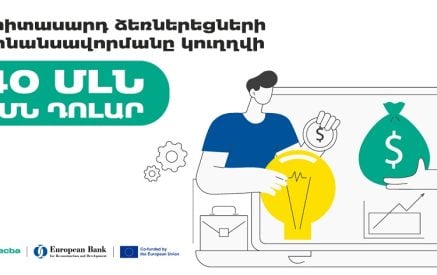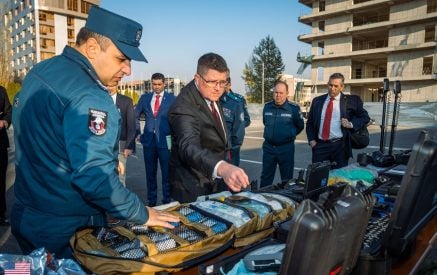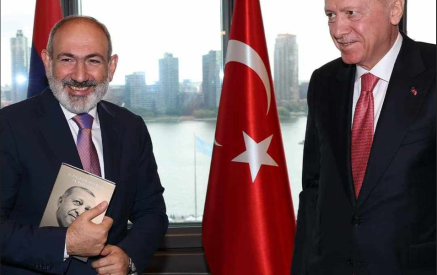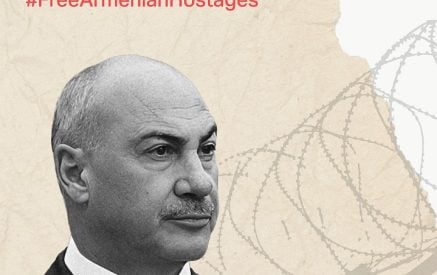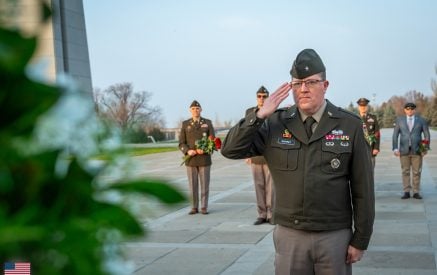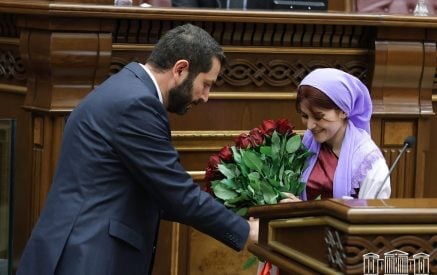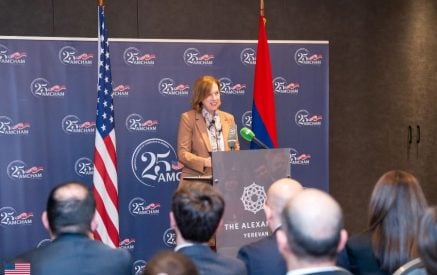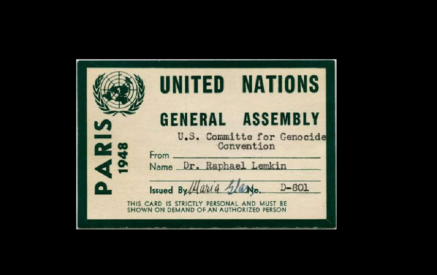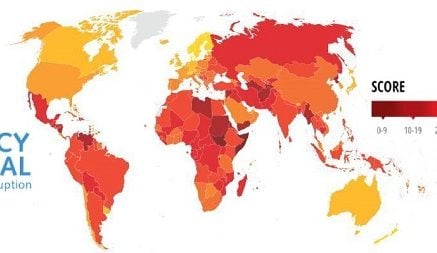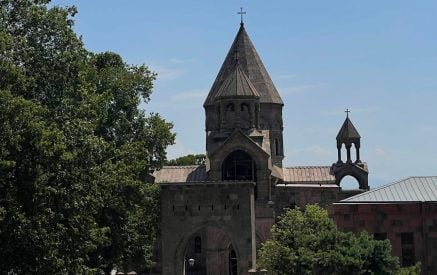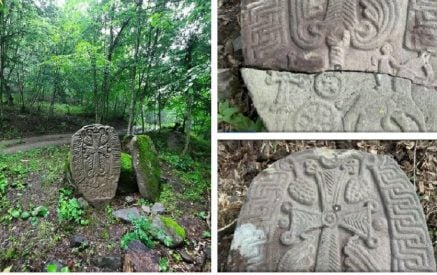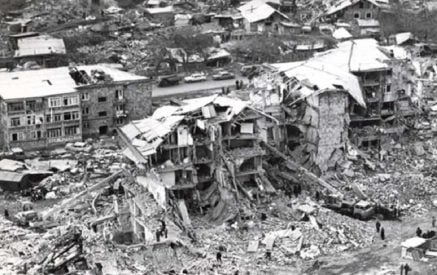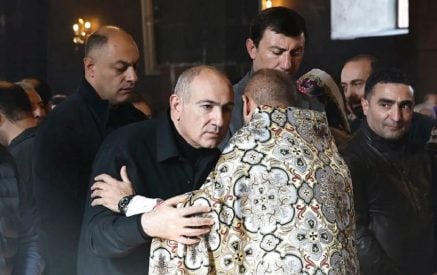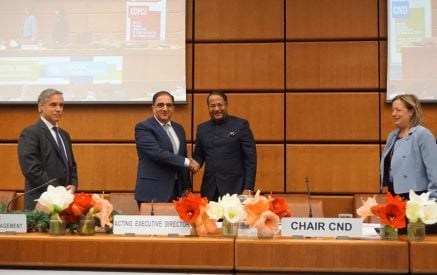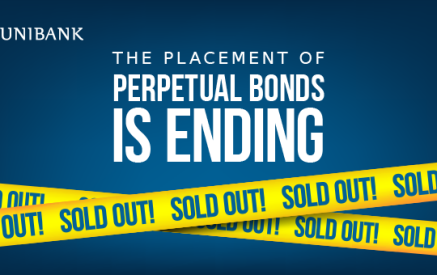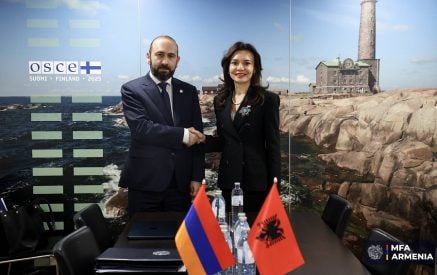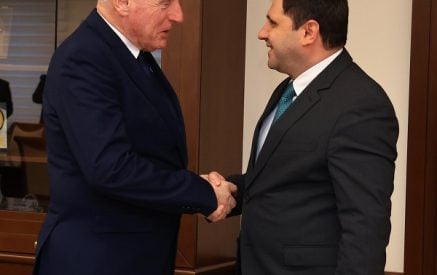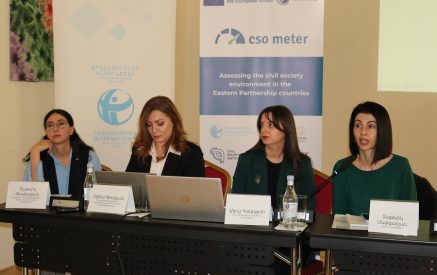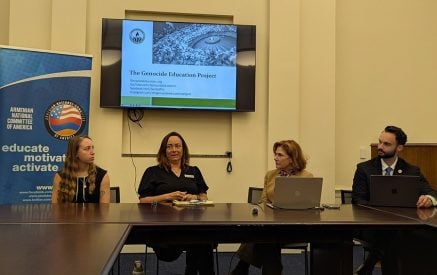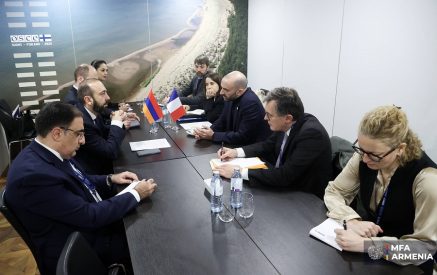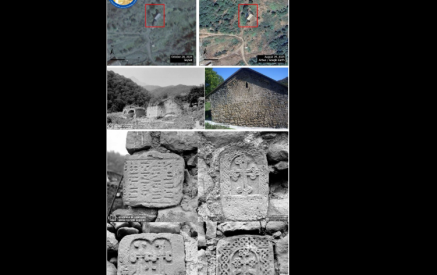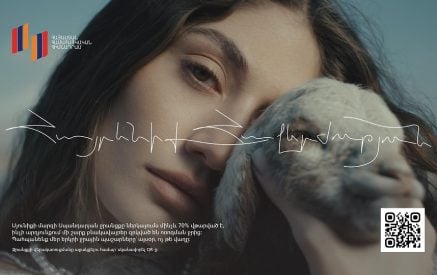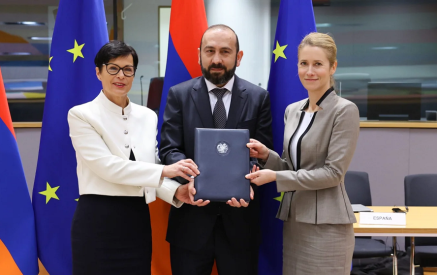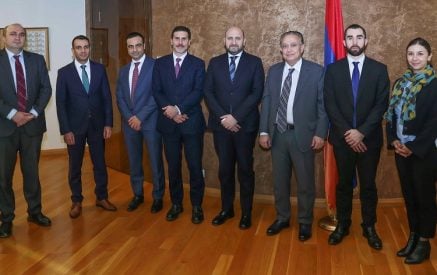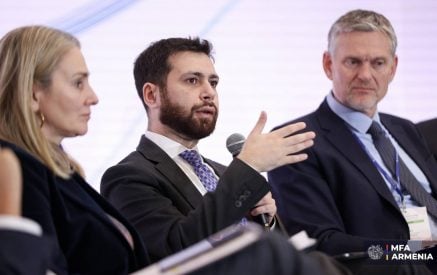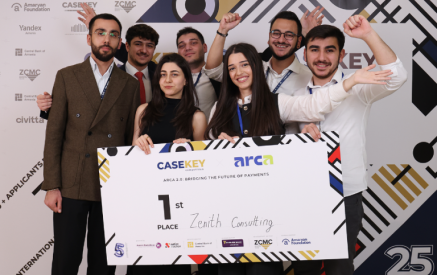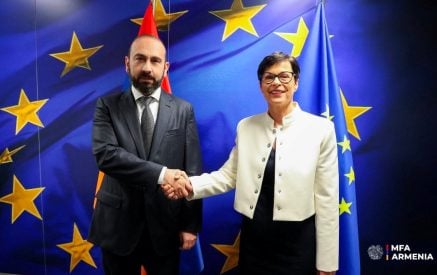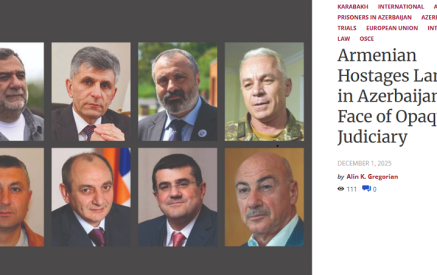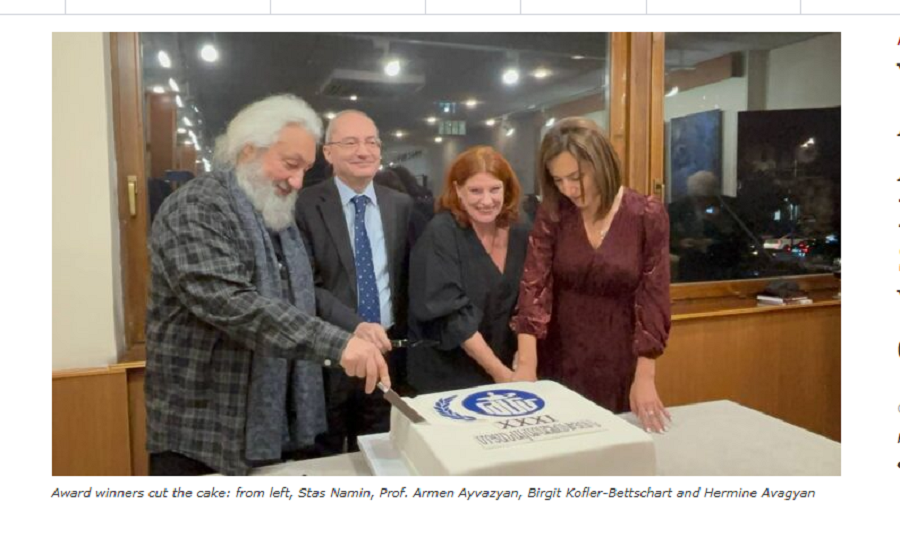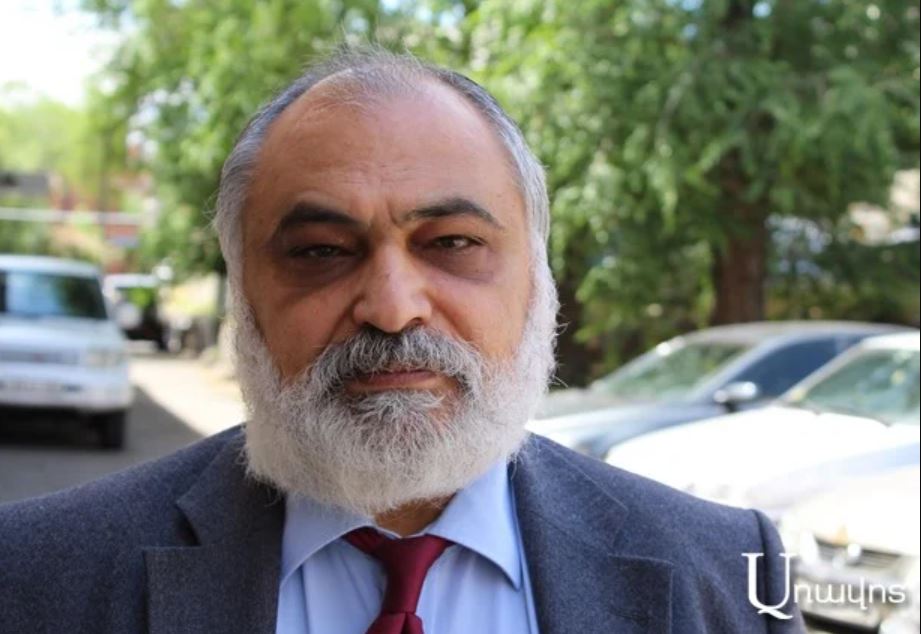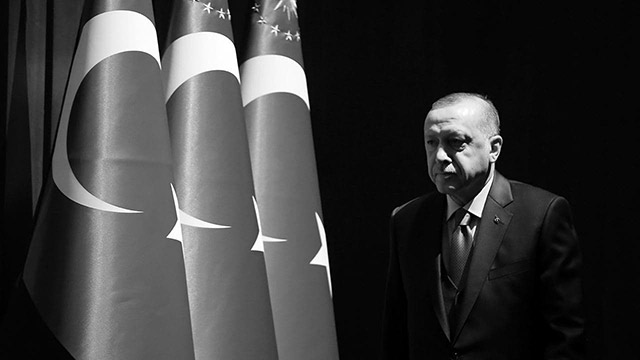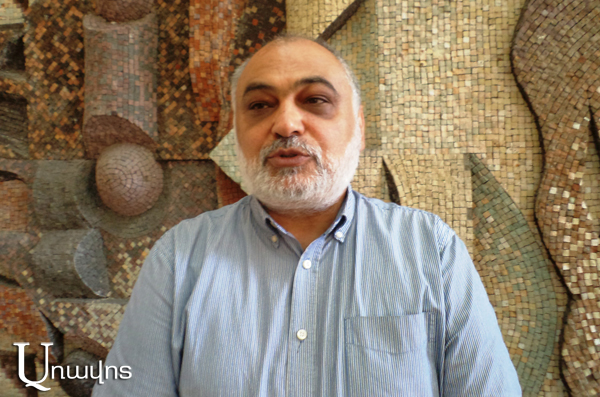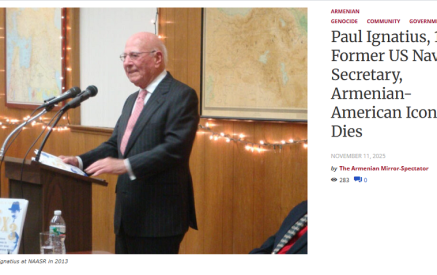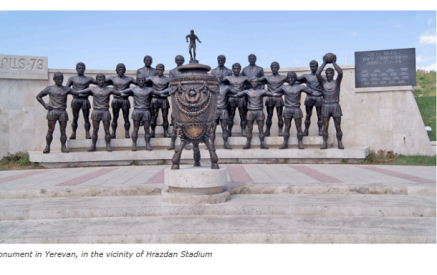by Aram Arkun
YEREVAN — The Tekeyan Awards, annually presented in the name of Vahan Tekeyan, are a way of highlighting exceptional contributions to Armenian culture by intellectuals and artists in Armenia and abroad. This year, the winners of the 31st set of these international awards were announced at Yerevan’s Tekeyan Center on October 21. The premiere of an Armenian-language documentary film titled “Between Homeland and Diaspora,” dedicated to the life of the late Edmond Y. Azadian, one of the founders of the awards ceremony who worked throughout his life to bridge Armenia and its diaspora, was a special addition to the event.
Bishop Anushavan Zhamgochyan, dean of the Yerevan State University Faculty of Theology, opened the ceremony with a prayer, and conveyed the blessings and praise of Catholicos of All Armenians Karekin II.
Read also
President of the Tekeyan Cultural Association of Armenia Prof. Ruben Mirzakhanyan noted that around 200 people had received a Vahan Tekeyan Award in the past, and four more were now being added to that number. He proceeded to announce the names of the latest awardees: Hermine Avagyan in the field of literature, Birgit Kofler-Bettschart in the field of Armenian Studies, Stas Namin in the fine arts category, and Artsakh Carpet LLC in the decorative and applied arts category. This year, in addition to the usual awards, a fifth special award, the Bagrat Nazarian Award, was announced, the winner of which was Prof. Armen Ayvazyan.
Mirzakhanyan spoke a few words in Armenian about each of them before the formal introduction of each awardee by the head of the respective jury in each field, and spoke briefly in Russian as well. He said that Kofler-Bettschart and Namin arrived in Armenia especially for the ceremony.
Prof. Aelita Dolukhanyan, corresponding member of the National Academy of Sciences of the Republic of Armenia, doctor of philology, and head of the jury for the literature category, related that Avagyan, born in Ashan village of the Martuni region of Artsakh, is a journalist and writer and the author of four books. She has won both international and Armenian awards for her works, some of which have been turned into plays.
Avagyan’s newest book, Kapoyt Tanikner [Blue Roofs], is short in length, Dolukhanyan said, but important in content and should be translated into various languages so that the world learns more about Artsakh. Blue is the color of dreams or desires, Dolukhanyan explained. The main female character of the poems constantly addresses her late mother and God, somehow uniting them. Dolukhanyan read some lines from the book after which Avagyan spoke words of thanks for the award.
Avagyan explained that she wrote the book during the difficult days of the blockade of the Lachin Corridor connecting Artsakh to Armenia. She was in Armenia at that time and could not go back home. It is there that the real Hermine continues to remain until today, spiritually, she said. Avagyan added to great applause that she believes that one day, instead of that true Hermine going across that bridge to Armenia, she will cross it back to Artsakh.
Prof. Ruben Safrastyan, an academician of the Armenian National Academy of Sciences and head of the Armenological jury, said that it was the title of Kofler-Bettschart’s book that first captured his attention: I Killed a Man But I Am Not a Murderer. It is about cruelty and the triumph of justice, he said, and more specifically, about Operation Nemesis, which led to the assassination of many of the Young Turk leaders who carried out the Armenian Genocide. Safrastyan revealed that his own grandfather was a participant in the Armenian Revolutionary Federation assembly which decided to carry out this operation.
One of the most important aspects of this book, written by a non-Armenian, said Safrastyan, is its investigative point of view, which was not emotional but delved into the broader human implications of the events which took place over a century ago.
Kofler-Bettschart, speaking in English, thanked the Tekeyan Cultural Association for the award as well as all those who helped her in the research and writing of her book. She thanked among others the descendants of participants in Operation Nemesis, who helped the translation of her book from German into Armenian, especially Armen Gevorgyan, and declared that she finds the denial of the Armenian Genocide to this day unbearable. She said that she wrote the book originally in German in part because of this denial and misinformation in her native Austria and Germany.
Her book explores issues of law and justice. However, she did not know when she started to write the book how relevant it would be to current events, she said, as the international community continues to look the other way when it comes to Armenian suffering. Kofler-Bettschart said that the Tekeyan Award would be an encouragement and motivation for her to continue her work. (A separate interview with her will appear soon in the pages of the Mirror-Spectator.)
Prof. Ara Hakobyan, head of the jury on fine arts, spoke about Stas Namin’s painting “Sanahin.” He declared that to paint an entire religious complex created in medieval times which has played an important role in Armenian history is extremely difficult. He called attention to the beautiful use of colors, including the green which symbolizes life.
Namin, whose full name is actually Anastas Alekseevich Mikoyan, and who is the grandson of the Soviet Armenian politician Anastas Mikoyan, is a famous musician who was one of the creators of rock music in the Soviet Union, as well as being a writer and creator of art. He accepted his award and spoke in Russian. He noted that as a child, he often visited Armenia, admired the nature there as well as historical and cultural monuments. He got music lessons from Arno Babajanian and painting lessons from Martiros Saryan. Sanahin particularly impressed him and much later led him to paint it. (A separate interview of Namin will soon be published in the Mirror-Spectator.)
Hakobyan then presented the award in decorative arts to Artsakh Carpets for the carpet called “Bouquet of Flowers of Shushi.” He said that with only a few colors, its designers succeeded in eliciting the emotion that other artists attempt to create through many more complicated means.
Donor Bagrat Nazarian of London, a member of the executive board of the Tekeyan Center of Yerevan, said that his award slightly deviated from the rule of the Tekeyan Awards because the book receiving the award, Armen Ayvazyan’s Armenian Troops in Artsakh, 1722-1735, was published this year, in 2025. He praised the scholarly value of the book, which is based on many different archival sources. Interestingly, Armenian forces in Artsakh and Syunik had modern weapons of the 18th century when they faced Ottoman and Iranian forces, Nazarian noted.
Nazarian said that this book was important not only as a historical work but had implications for the present, as Armenians are facing problems similar to those 300 years ago, having to defend Armenian identity, security and independence.
Ayvazyan expressed his thanks for what he said was an unexpected honor. The book is part of a trilogy, the first two volumes of which were published in 2022 and 2024, presenting much historical military information for the first time as well as demographic information. Unlike in Syunik, in Artsakh the most important decisions in the 1720s were taken at meetings including representatives of all the social strata of the Armenians, Ayvazyan said.
Finally, the documentary film dedicated to the life of Edmond Azadian, which was prepared by Diana Markosyan, was screened, followed by a reception for all those present in a hall where they could also view art works submitted for the Tekeyan Awards competition.
The audience included ambassadors and representatives of cultural organizations, as well as Armenian intellectuals, writers, artists and public figures.
The Vahan Tekeyan Awards are sponsored by the Central Board of the Tekeyan Cultural Association of the United States and Canada, with the help of the proceeds of the Akabi Shake Ghazarian Fund. Executive Director Aram Arkun represented the Central Board at the awards ceremony this year.


